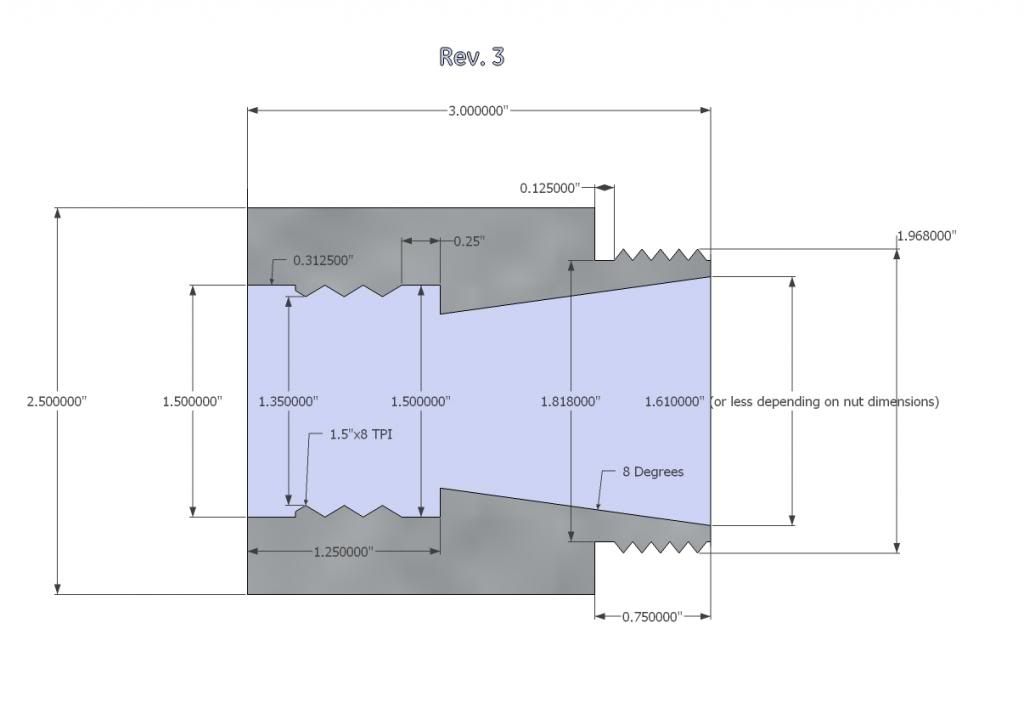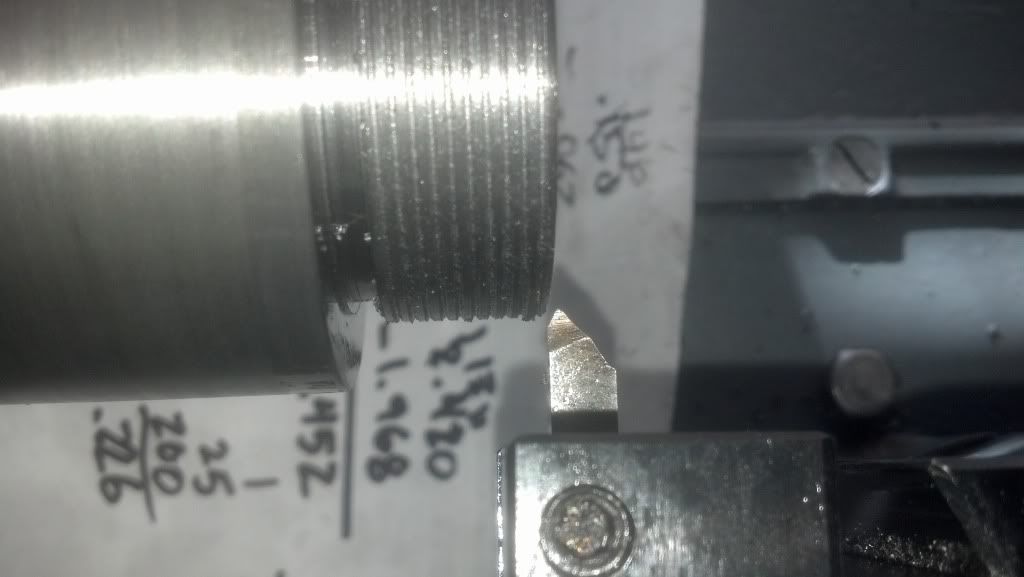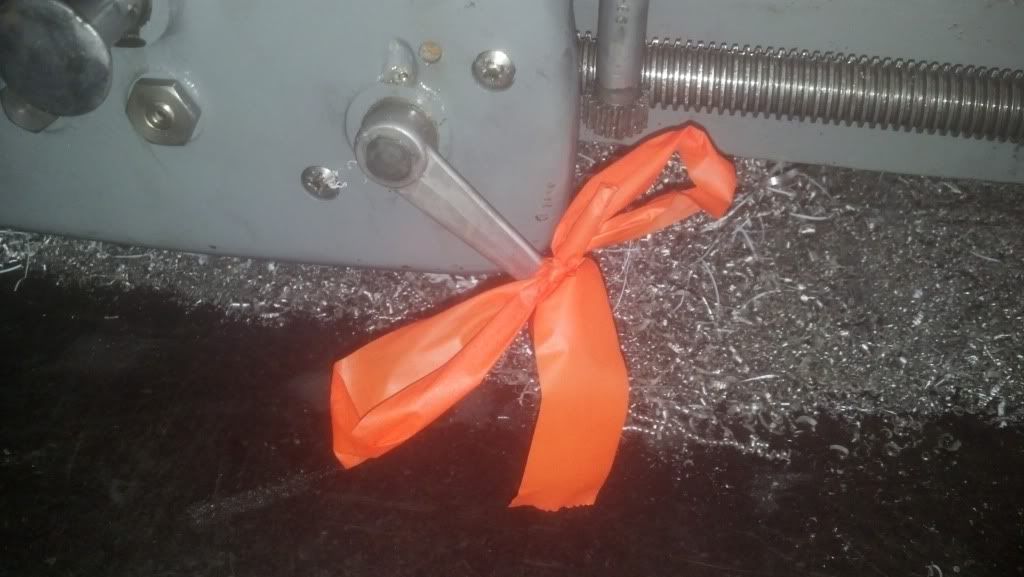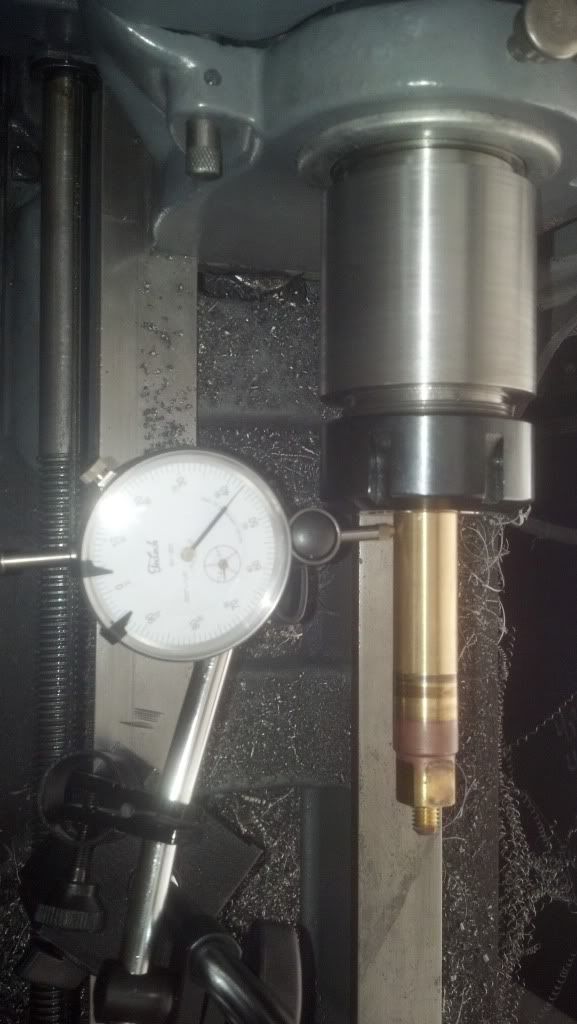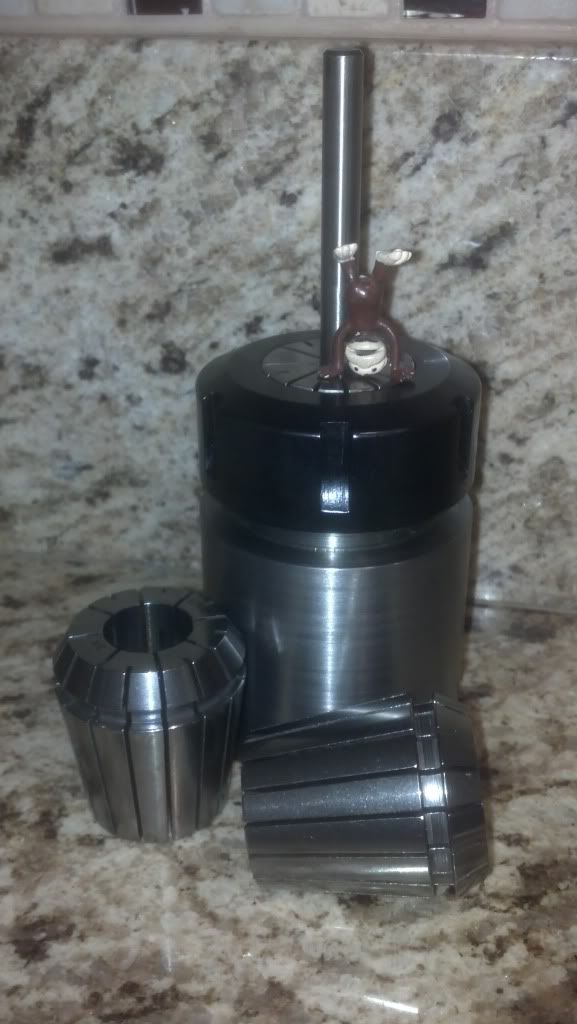Hello,
It's finished! The nut fits extremely well on the external threads. Here's a shot of the tool I ground to cut the threads:
I had to offset the point to the left so I wouldn't run into the other side of the thread relief. It wasn't all that much handcranking of the spindle after all. I only turned it by hand in reverse since the backgears are nice and slow during the threading. I wanted to make sure I didn't disengage the half nut before the operation was complete on accident so I employed this device to keep me in check:
There's one thing I just can't figure out that I'm hoping someone can help me out with... Both times that I've threaded on this machine the threads are finished with much less compound feed than in the calculations. We figured earlier in this post that the total compound feed (at 29degrees) would be 0.055"-0.068" (depending on the nut thread). When I finished however I had only advanced the compound rest 0.038" and the threads were done...? It was the same story on the internal threads I first did; only about 60% of the calculated values...? Anybody know what I'm missing here???
Either way it was fairly evident when it was time to start testing the nut and it fits very well after a couple "spring cuts".
I tested the final runout of the chuck with a 0.75" piece of brass scrap that I had previously turned in the 4-jaw. The runout was just about 0.001". I am very pleased with that number! I was expecting ~0.003"! Here's that:
I only got to check it with one other collet and a 5/16" drill blank. It also checked out at 0.001"!
Here's the finished project:
All in all this was a great project to re-learn all this stuff. I'd recommend it to anyone who's just starting out in machining. It's a great way to learn a bunch of lathe skills and now I have a precise holder for parts from 0.100"-1.125" that allows stock to be extended through the spindle bore! The total project time was about 10 hours. Most of that was scratching my head to figure things out and grinding tool bits slowly on a belt sander. The lathe probably only ran about 2 hours of all that time!
Someday when I have a dividing head I think I will cut 0.250" grooves that match those on the nut. And I might throw some knurling on there too so turning the spindle by hand is easier. That would really round out the project skill set.
My next project will be a set of simple right hand and left hand tangential toolholders with 1/2" shanks. I'll post what I can on those and then on to making my first simple single oscillator.
Thanks to anyone who offered advice or followed this thread.
-J.Andrew





